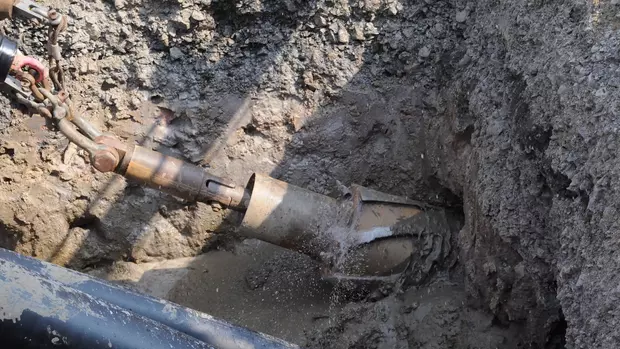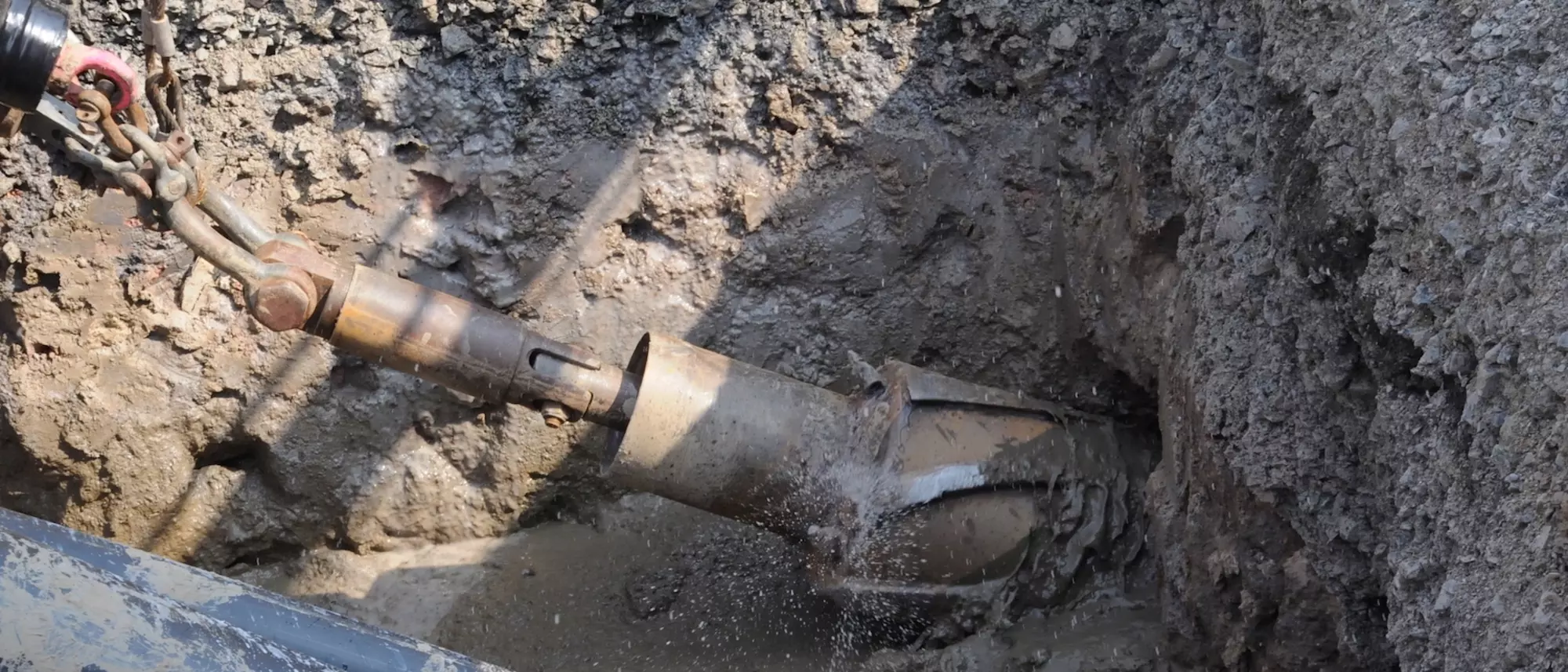
Climate-friendly heating energy for the future residential area on the Lahnwiesen - Stadtwerke Gießen recently laid the foundations for this with a new district heating pipeline. The biggest hurdle: the River Wieseck.
Numerous public buildings and thousands of homes in Giessen utilise climate-friendly and efficiently generated heat energy. The basis for this is a well-developed and widely ramified district heating network, which Stadtwerke Gießen (SWG) has continuously expanded over the past decades. The experts are currently connecting the two sub-networks around the combined heat and power plant (CHP) on the SWG factory premises in Lahnstraße and around the CHP plant on the site of the Giessen sewage treatment plant. The length of the new pipeline is around two kilometres. "The route itself is not a problem. One of the special features and major challenges of this project is that we had to cross or pass under the Wieseck river," explains Matthias Funk, Technical Director at SWG.
The method used to run the district heating pipes from one bank to the other is called the flush drilling method. At the beginning of August, steerable drills ate their way around 80 metres through the earth to gradually widen the passage to the required diameter. On Friday 14 August, the drilling rig finally pulled the pipeline system and additional empty conduits under the Wieseck. "We also crossed under the Lahn in the same way when the connection between Nordstadt and Weststadt was created," explains project manager Stefan Ruckstuhl from SWG.
Opportunity seized - network expanded
Thanks to the currently laid pipes and the Wieseck culvert, SWG is integrating the previous district heating island around the sewage treatment plant into the large network in the city centre. They are also creating the conditions for supplying the planned residential area on the Lahnwiesen with climate-friendly energy right from the start - from two sides. The two CHP units on the SWG plant site and on the site of the sewage treatment plant ensure a particularly high level of supply security. The same applies to the Hessian initial reception centre for refugees, which will also be connected to the district heating network.
Jens Schmidt, Commercial Director of SWG, explains why the project was recently launched: "We currently have a unique opportunity, as the renaturalisation of the Wieseck is also currently underway. We have seized this opportunity and taken another step towards the energy transition."

